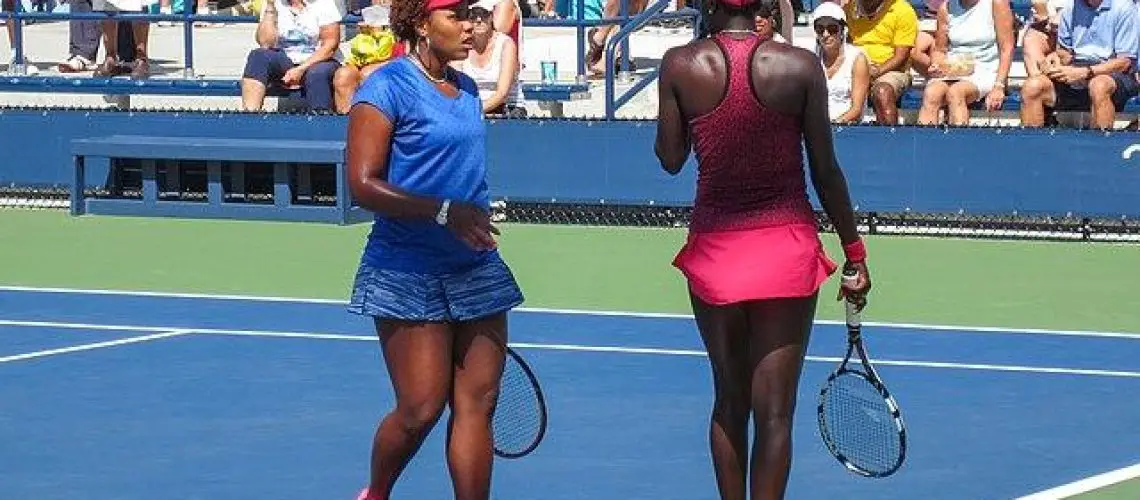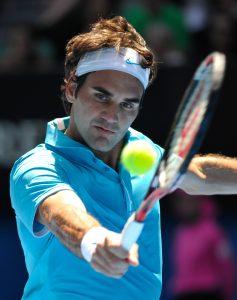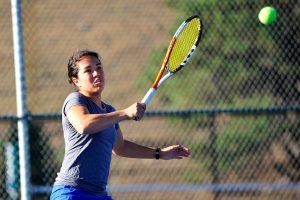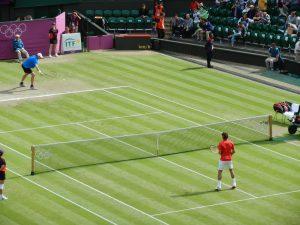We may earn money or products from the companies mentioned in this post.
Introduction

Tennis is a sport that has captivated people around the world for centuries With its origins dating back to 12th century France, tennis has evolved into a dynamic and thrilling game played on courts of various surfaces The sport’s popularity continues to soar, attracting players of all ages and skill levels
A Brief History of Tennis
The history of tennis can be traced back to medieval times when it was known as “jeu de paume,” meaning “game of the palm” Players used their hands to hit a ball against a wall or over a rope strung across a courtyard Over time, rackets were introduced, and the game began to resemble what we know as tennis today
In the late 19th century, major developments in racket design and court construction took place The rules were standardized, leading to the establishment of international tournaments such as Wimbledon and the US Open Today, tennis is played at both amateur and professional levels, with players competing for titles and rankings
Popularity and Benefits of Playing Tennis
Tennis has gained immense popularity worldwide due to its exciting gameplay and numerous health benefits As a fast-paced sport that requires agility, endurance, and strategic thinking, it offers an exhilarating experience for both players and spectators
One of the key benefits of playing tennis is its impact on physical fitness It helps improve cardiovascular health, muscular strength, coordination, flexibility, and overall fitness levels Additionally, tennis provides an excellent aerobic workout that burns calories efficiently
Beyond physical fitness advantages, tennis also promotes mental well-being It enhances concentration skills as players must constantly anticipate their opponent’s moves and react swiftly The strategic nature of the game stimulates problem-solving abilities while boosting cognitive function
Purpose of the Article
The purpose of this article is to explore the history, popularity, and benefits of playing tennis By delving into the roots of this captivating sport and highlighting its physical and mental advantages, readers will gain a deeper appreciation for tennis and may be inspired to pick up a racket themselves
Basic Techniques and Skills

Tennis is a sport that requires a combination of skill, technique, and strategy To excel on the court, players must master various techniques and strokes In this article, we will explore the basic techniques and skills that every tennis player should be familiar with
Grip Techniques
One of the fundamental aspects of playing tennis is understanding the different grip techniques There are three main types of grips: Eastern grip, Western grip, and Continental grip
-
Eastern Grip:
The Eastern grip is commonly used for both forehand and backhand shots It involves placing the base knuckle of your index finger on the third bevel of the racket handle -
Western Grip:
The Western grip is ideal for generating topspin on your shots It requires you to position your hand further towards the bottom of the handle, so that your base knuckle rests on or near the fifth bevel -
Continental Grip:
The Continental grip is primarily used for serving, volleying, and overhead shots It involves placing your base knuckle between the second and third bevels
Essential Strokes
The foundation of a solid tennis game lies in mastering essential strokes such as forehand stroke, backhand stroke, and serving techniques
Forehand Stroke
The forehand stroke is one of the most powerful shots in tennis It involves a series of steps including preparation, execution, and follow-through to maximize power and precision
-
Preparation:
Before hitting a forehand shot, position yourself sideways to the net with your non-dominant foot slightly ahead Hold the racket back and get ready to swing -
Execution:
As the ball approaches, step forward with your front foot, rotate your hips and shoulders, and swing the racket forward in a smooth motion Make contact with the ball at waist level or slightly in front -
Follow-through:
After making contact with the ball, continue your swing towards the target while maintaining balance and control A proper follow-through ensures accuracy and power in your shot
Backhand Stroke
The backhand stroke can be executed using either a one-handed or two-handed grip, depending on personal preference and comfort
-
One-Handed Backhand:
To perform a one-handed backhand, start with an Eastern or Continental grip Step into the shot, rotate your body sideways, and extend your non-dominant arm for balance Swing through the ball with a fluid motion -
Two-Handed Backhand:
The two-handed backhand provides more stability and control over the shot Hold the racket with both hands close together on the handle Bend your knees, rotate your hips, and swing both arms simultaneously to strike the ball confidently
Serve
The serve is an essential weapon in a tennis player’s arsenal It sets up each point and can dictate the pace of play Mastering different types of serves is crucial for success on the court
-
Flat Serve:
The flat serve is hit with minimal spin but maximum power Toss the ball slightly in front of you, extend your hitting arm upwards as you make contact, and aim for the service box -
Slice Serve:
The slice serve involves hitting the ball with side spin Toss the ball slightly to your dominant side, brush against the back of the ball with a slicing motion, and watch it curve away from your opponent -
Kick Serve:
The kick serve generates topspin and bounces high upon landing Toss the ball higher than usual, swing upwards and forwards while brushing against the back of the ball The result is a serve that jumps up towards your opponent’s shoulder or head height
Stance and positioning play a crucial role in serving effectively Find a comfortable stance that allows for balance and power Additionally, practice tossing the ball consistently at an optimal height for clean contact with your racket
In conclusion, mastering basic techniques and skills in tennis is essential for players looking to improve their game By understanding grip techniques, essential strokes such as forehand and backhand shots, as well as various types of serves, players can elevate their performance on the court Practice these techniques regularly to build a strong foundation and take your tennis skills to new heights!
Tennis Strategies and Tactics

Playing Styles
When it comes to tennis, players often develop their unique playing styles that suit their strengths and preferences Here are three common playing styles:
-
Baseliner:
The baseliner prefers to stay at the back of the court and engage in long rallies They rely on consistent groundstrokes to wear down their opponents -
Serve-and-volleyer:
This style involves rushing to the net after a strong serve, aiming to finish points quickly with volleys or smashes Serve-and-volleyers thrive on aggressive play -
All-court player:
An all-court player is versatile and comfortable playing from both baseline and net positions They possess a well-rounded skill set, allowing them to adapt to different situations during a match
Court Positioning
In tennis, court positioning plays a crucial role in gaining an advantage over your opponent Here are two key aspects of court positioning:
-
Advantages of Controlling the Center:
One strategic move is to position yourself near the center of the baseline as it allows you better coverage of the entire court By controlling the center, you can dictate play and force your opponent into difficult shots -
Moving Your Opponent Around the Court:
Another effective tactic is to vary your shot placement, angles, and depths to keep your opponent off balance By constantly moving them around, you create opportunities for winners or induce errors
Singles vs Doubles Strategies
Tennis strategies differ between singles and doubles matches because of varying dynamics and team structures Let’s explore two important aspects:
-
Communication in Doubles:
Unlike singles, doubles requires effective communication between partners Clear signals and coordination are essential to avoid confusion and maximize teamwork -
Altering Tactics Based on Opponents’ Weaknesses:
In both singles and doubles, adapting your tactics according to your opponents’ weaknesses is key Identifying their vulnerabilities can help you exploit them and gain an upper hand in the match
In conclusion, understanding different playing styles, mastering court positioning, and adapting strategies for singles or doubles matches are vital elements of tennis success By incorporating these tactics into your game plan, you can improve your chances of victory on the court
Mental and Physical Preparation for Tennis

Proper equipment selection
When it comes to tennis, having the right equipment is crucial The first step in proper equipment selection is choosing the right racquet Your choice of racquet can greatly affect your performance on the court, so take the time to find one that suits your playing style and skill level
Next, don’t overlook the importance of selecting appropriate footwear Tennis involves a lot of quick movements, so investing in a good pair of tennis shoes with proper support and traction is essential to prevent injuries and optimize your performance
Last but not least, dressing comfortably for play is key Opt for lightweight, breathable clothing that allows you to move freely without any restrictions Remember, comfort directly impacts your focus and agility on the court
Physical fitness requirements
To excel at tennis, it’s important to prioritize physical fitness Strength training plays a significant role in enhancing muscle power and stability needed for powerful shots and quick directional changes during matches Incorporate exercises that target core strength as well as upper and lower body muscles into your training routine
In addition to strength training, endurance conditioning is crucial for long matches or intense rallies Engage in cardiovascular activities such as running or cycling to improve stamina and keep up with the demands of an intense game
Flexibility exercises are equally important as they help prevent injuries while enabling you to perform dynamic movements on the court effortlessly Regular stretching routines targeting major muscle groups will enhance flexibility and joint mobility
Mental preparation techniques
Tennis is not just about physical prowess; it requires mental fortitude too Setting clear goals can provide direction and motivation throughout your journey as a tennis player Whether it’s improving your serve percentage or winning a specific tournament, setting achievable goals helps you stay focused and measure your progress
Developing a pre-match routine can help you mentally prepare for matches It may include warm-up exercises, visualization techniques, or even listening to music that pumps you up Establishing a routine creates a sense of familiarity and readiness before stepping onto the court
Lastly, managing stress during matches is crucial to maintaining peak performance Tennis can be an intense and high-pressure sport, so learning techniques such as deep breathing or positive self-talk can help calm your mind and keep anxiety at bay
Useful Links

6 Tips to Improve Your Tennis Game Now
5 Tennis Tips for Beginners | How To Improve Your Skills
How to Play Tennis: Tips for Getting Started
5 Tips for Playing Tennis in the Wind
10 Tennis Tips For The Beginner
Tennis tips for beginners | Health & wellbeing
How To Play Tennis | Tips For Beginners Tennis Players
8 Coach’s Tips to Improve Your Tennis Game | ACTIVE
Tennis Playing Tips for Club Tennis Players
Tips From a Tennis Pro: Why Regular Play Is Essential to …
Tips for Competition | Play Tennis
Playing Tennis: Tips For Beginners
5 Coach’s Tips To Improve Your Tennis
Tennis Controls and Tips – Nintendo Switch Sports Guide
5 Tips to Play Tennis like A Pro, All You need to Know about
How to Play Tennis: The Complete Guide to the Rules …
5 Tips To Improve Your Tennis Game Today






